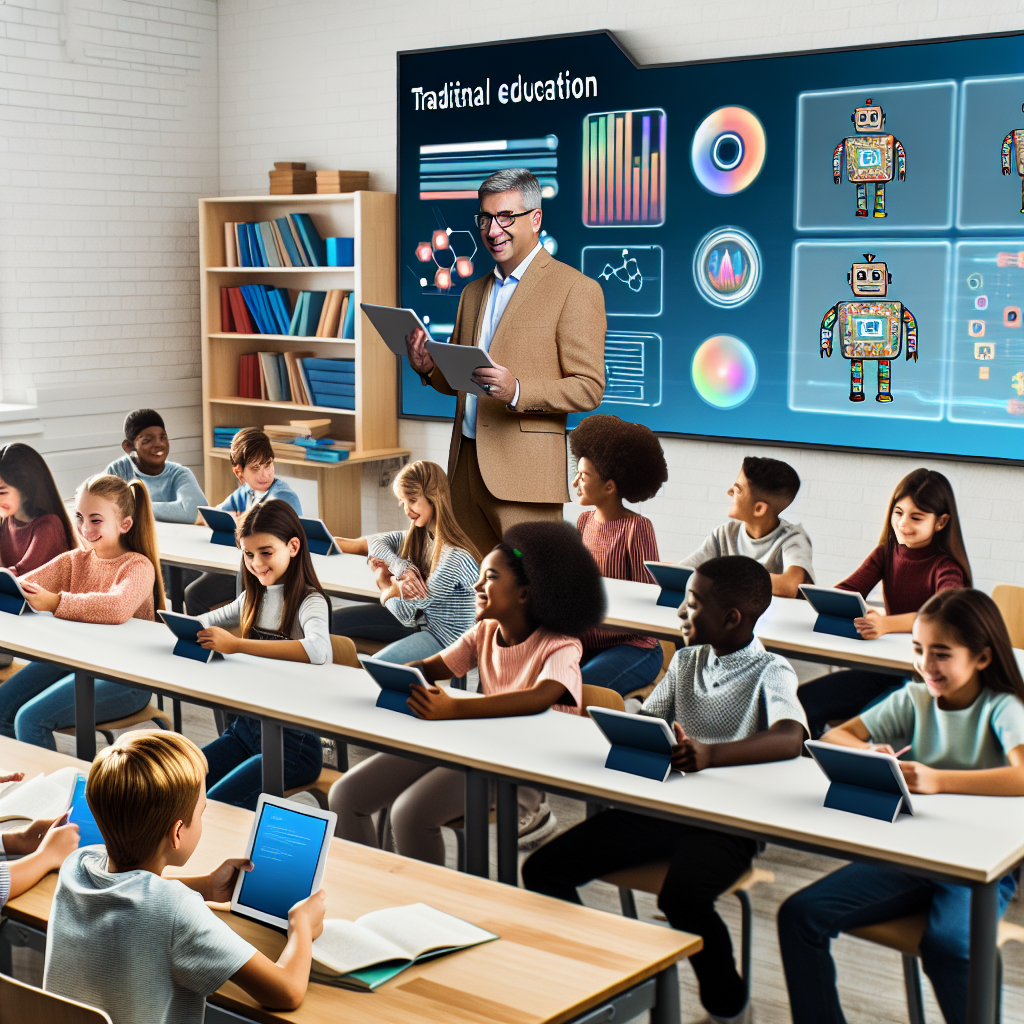Did you know that 47% of educators now use AI-powered tools in their classrooms? The integration of artificial intelligence in education represents one of the most significant technological shifts in modern pedagogy. I’ve seen firsthand how AI is fundamentally changing the way we teach and learn, creating opportunities that were unimaginable just a few years ago. Let’s explore this fascinating transformation!
Understanding AI in Education
Just as a skilled teacher adapts their teaching style to each student, AI is revolutionizing education by bringing personalization to a whole new level. Let’s explore how this fascinating technology has evolved and what it means for modern education.
Definition and Core Concepts of AI in Educational Contexts
Imagine having a virtual assistant that understands exactly how you learn best. That’s precisely what educational AI aims to achieve, using sophisticated algorithms and machine learning to enhance the learning experience. Much like how Netflix recommends shows based on your viewing habits, educational AI systems analyze learning patterns to deliver tailored content.
Historical Development of AI-Powered Educational Tools
The journey of AI in education has been remarkable. From simple computer-aided instruction in the 1960s to today’s sophisticated learning platforms, we’ve come a long way. Remember those basic educational games we used to play? They’ve evolved into complex, adaptive learning systems that respond to each student’s needs in real-time.
Current State of AI Adoption in Schools and Universities
Today’s educational landscape is increasingly embracing AI technology. For instance, many universities now use AI-powered platforms to provide instant feedback on assignments, while some K-12 schools employ smart tutoring systems that adapt to each student’s pace.
Key Benefits and Potential Challenges
While AI offers tremendous advantages like personalized learning experiences and efficient assessment tools, it’s not without its hurdles. Just as smartphones brought both opportunities and challenges to classrooms, AI technology presents its own set of considerations.
Key Applications of AI in Teaching
Personalized Learning Pathways and Adaptive Content
Think of AI as a personal education GPS, constantly recalculating the best route to understanding based on your progress. When a student struggles with fractions, for example, the system might introduce more visual examples or break down concepts into smaller, more digestible pieces.
Intelligent Tutoring Systems
Modern AI tutors are like having a patient teacher available 24/7, ready to explain concepts in multiple ways until they click. These systems can identify knowledge gaps and provide targeted support, much like a personal tutor who knows exactly where you need help.
Automated Grading and Feedback Systems
Gone are the days of waiting weeks for essay feedback. AI-powered systems can now provide instant, detailed feedback on writing assignments, much like how spell-checkers evolved into sophisticated grammar and style advisors.
Virtual and Augmented Reality Learning Environments
Imagine walking through ancient Rome while learning history, or exploring molecular structures in 3D. These immersive experiences are becoming increasingly common in educational settings, making abstract concepts tangible and memorable.
Impact on Students and Teachers
Enhanced Student Engagement and Motivation
Just as video games keep players engaged through progressive challenges and rewards, AI-powered learning systems use similar principles to maintain student interest and motivation.
Reduced Administrative Burden for Educators
By automating routine tasks like grading multiple-choice tests and tracking attendance, AI frees up teachers to focus on what they do best: inspiring and guiding students through complex learning journeys.
Improved Learning Outcomes and Assessment Accuracy
With AI’s ability to track and analyze student performance in detail, we’re seeing more precise and fair assessment methods. It’s like having a sophisticated fitness tracker for learning, providing detailed insights into progress and areas for improvement.
Development of 21st-Century Skills
As students interact with AI-powered tools, they naturally develop digital literacy and critical thinking skills essential for the modern workplace. It’s similar to how previous generations learned to use calculators and computers as part of their education.
Challenges and Considerations
Data Privacy and Security Concerns
Just as we’re careful about sharing personal information online, educational institutions must be vigilant about protecting student data in AI systems. This includes everything from academic records to learning behavior patterns.
Equity and Accessibility Issues
Much like the digital divide of the early internet era, we must ensure AI educational tools don’t create new barriers between students with and without access to these resources.
Teacher Training and Adaptation
Introducing AI tools is similar to when computers first entered classrooms – success depends largely on proper training and support for educators who need to master these new teaching aids.
Ethical Considerations in AI-Powered Education
As we integrate AI more deeply into education, we must carefully consider its impact on student development, much like how we evaluate the effects of social media on young minds. This includes ensuring AI systems promote inclusive learning environments and respect diverse learning styles.
Conclusion
The integration of AI in education marks a pivotal moment in the evolution of learning. While challenges exist, the potential benefits of AI-enhanced education are impossible to ignore. Whether you’re an educator, student, or administrator, now is the time to embrace these technological advances and help shape the future of education!

